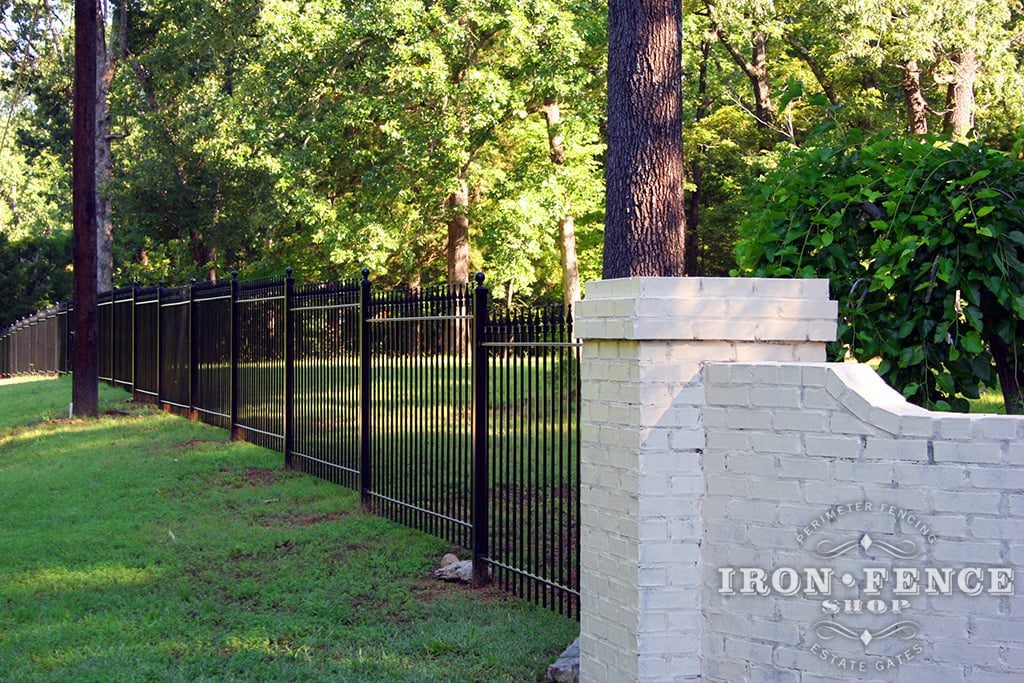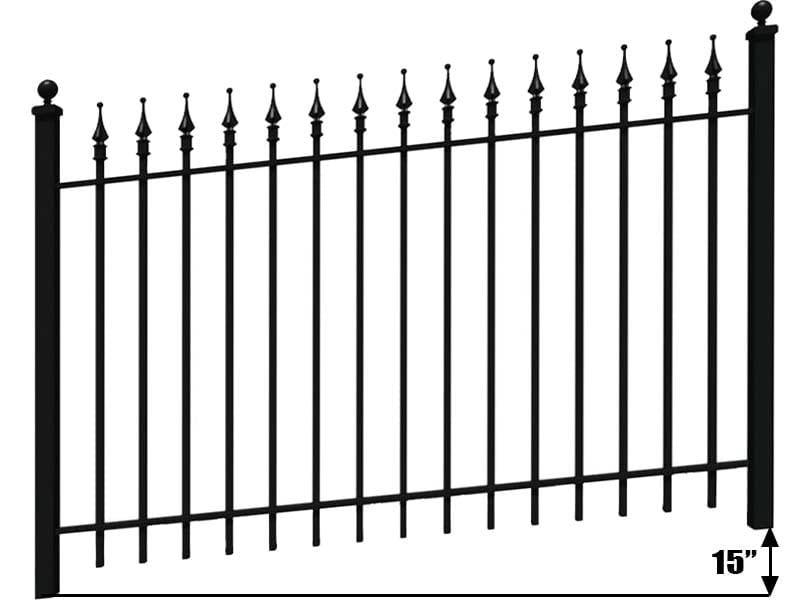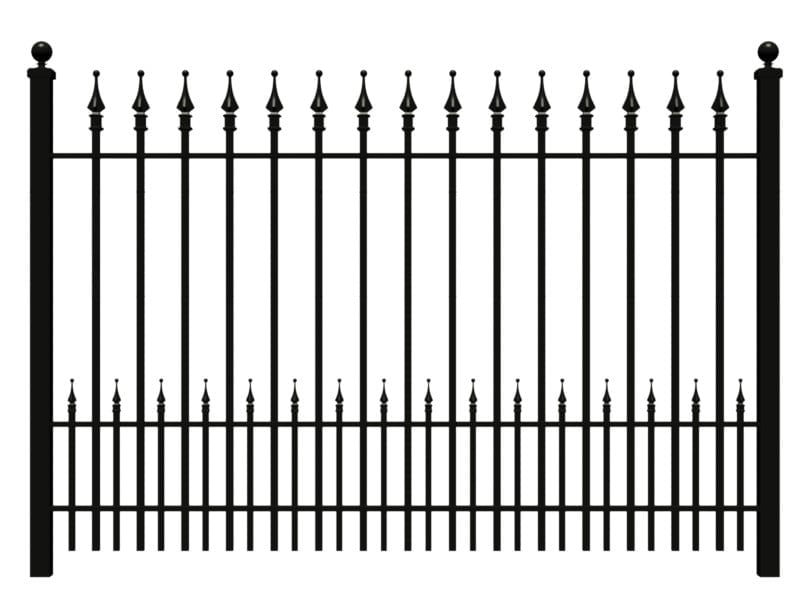
Choosing the right fence for your property is more than just a practical decision—it’s also about style, upkeep, cost, and how well it suits your lifestyle. Two of the most popular choices—metal and wooden fences—each bring their own set of benefits and challenges. So, which is best for your yard, home, or business?
In this guide, you’ll find a side-by-side look at metal and wood fences, covering everything from aesthetic appeal to maintenance and sustainability. Whether you’re after strength, charm, or just the best value, we’ve got you covered.
Key Differences of Wood Vs Metal Fences
Metal and wood are completely different materials, and understanding their basic characteristics is essential. The materials used not only impact how the fence looks but also how it performs over time in your space.
Let’s take a closer look at what makes these fencing options stand apart.
Materials and Structure
Metal fences typically use aluminum, steel, wrought iron, or chain link. Each material brings its own benefits:
- Aluminum is lightweight and rust-resistant.
- Steel is strong and secure, ideal for commercial use.
- Wrought iron is prized for its historic appearance but requires higher maintenance costs.
- Chain link offers utility and low cost for functional fencing.
Wooden fences are made from cedar, pine, redwood, or spruce. These offer:
- Aesthetic warmth
- Varying durability depending on species
- Opportunities to paint or stain for a custom look
Metal designs tend to be sleeker and more modern, while wood allows more customization in form and finish.
Common Types of Each Fence
Both metal and wood fences come in many styles meant to meet different needs—from privacy and decoration to boundary-marking or pet containment.
Below are some of the most common and practical choices available in each category.
Popular Metal Fence Styles
- Chain Link Fences – Affordable and functional. Often used for schools, yards, or sports areas.
- Wrought Iron Fences – Decorative, strong, and traditional in design.
- Aluminum Fences – Versatile for residential use and minimal upkeep.
- Steel Fences – Excellent for high-security locations and heavier-duty applications.
Popular Wooden Fence Styles
- Picket Fences – Perfect for charming front yards and curb appeal.
- Privacy Fences – Ideal for backyards where privacy is a must.
- Split Rail Fences – Great for marking land on farms or large open areas.
- Lattice Fences – Stylish and decorative; perfect for gardens.
- Board-on-Board Fences – Solid panels offer total seclusion and noise buffering.
When it comes to selecting a type, think about the purpose—security, saving money, decoration, or privacy—and choose accordingly.
Durability and Maintenance
One of the most important factors in fence longevity is how well it stands up to time, weather, insect damage, and daily wear and tear.
Understanding the durability of both metal and wood goes hand-in-hand with knowing how much work each option will require to stay in top condition.
Which Fence Lasts Longer?
Metal fences—especially those made of aluminum or galvanized steel—stand out for their resilience. They generally resist rust, rot, and pests.
Wood, while it features a more natural appearance, may warp or crack due to moisture or sunlight without regular sealing or staining. Cedar and redwood do last longer, but regular maintenance is a must.
Maintenance Comparison
| Maintenance Task | Metal Fences | Wooden Fences |
| Cleaning | Light wash | Power wash or scrape |
| Painting/Staining | Rarely needed | Every 1-3 years |
| Inspection | For rust/damage | For rot, termites |
| Life Expectancy | 20–40 years | 10–20 years (with care) |
If you’re after a “set it and forget it” solution, metal fencing is often the wiser investment. That’s why many property owners rely on long-lasting, highly durable options from companies like Iron Fence Shop, where quality metals meet classic design.
Weather Resistance
Climate and seasonal conditions play a major role in the performance and life of your fence. Rain, sun, snow, and wind can wear down materials over time.
In this section, we’ll examine how metal and wood react to the elements, and which can better handle the climate in your area.
How Metal Handles Severe Weather Conditions
Protected by coatings and powder finishes, aluminum and steel fences tend to resist rust and corrosion, especially if you’re buying from a reputable provider whose products are engineered for longevity.
That said, extreme winds may bend weaker metal sections, so installation quality is key.
How Wood Holds Up
Wood is more vulnerable to moisture and needs consistent care. Freezing temperatures, long rainy seasons, or constant sun exposure can lead to rot, mildew, or cracking. However, quality lumber like cedar or redwood naturally holds up better over time.
If you’re in a humid or coastal region, metal might outperform wood in the long run.
| Weather Warrior Tip: Boost your fence’s defense by choosing a metal option with a zinc-rich primer beneath the powder coating. This extra layer acts like armor against rust—especially in coastal or humid climates—giving your fence a much longer life. |
Cost Breakdown to Know Which Is More Cost-Effective
Budget often drives decisions, but costs go beyond just the upfront materials. In this section, we cover both the initial and ongoing costs of fencing.
Upfront Costs Plus Fence Installation
Metal fences generally come with a higher upfront cost due to material quality, durability, and long-term performance. Instead of being sold by linear foot, panels are offered in fixed sizes. Aluminum fence panels range from $116 to $231, while steel fence panels range from $293 to over $600, depending on size, style, and grade.
Installation costs vary based on your location, site conditions, and project complexity. In some cases, metal fence installation may involve added labor due to heavier materials and precise post alignment.
However, many panels arrive pre-fabricated, which can simplify setup and potentially offset labor time when compared to raw-material builds.
Wood fence installation, by contrast, may have lower upfront costs but often requires more maintenance and earlier replacement—factors to consider when comparing overall lifetime value.
Long-Term Costs
Wood may have a lower upfront price, but often requires regular sealing, staining, and potential board replacement—adding to the total cost over time.
Metal fences may come with a higher initial cost, but they typically require little maintenance and can go years without significant upkeep, resulting in lower lifetime expenses.
Aesthetics and Design Flexibility
A fence offers much more than function—it’s part of your first impression. That’s why style plays such a huge role in choosing your material.
Whether you want something sleek and modern or rustic and homey, both metal and wood offer versatile design possibilities.
Which Option Is More Flexible?
Metal fences are highly customizable in terms of height, color, and decorative elements. They suit both modern and traditional styles, especially when bought through a specialized shop offering ornate or streamlined designs.
Natural wood provides earthy, natural charm with broad flexibility: stain it, paint it, shape it how you want. From charming pickets to total privacy panels, wood accommodates many homes—especially cottage-style or Craftsman builds.
Terrain and Space Considerations
Wood fences are easier to adapt to hilly or uneven areas since planks can be cut on-site. Metal fences may require more measuring and planning up front.
At Iron Fence Shop, many designs are made modular so they can be installed across different terrain types—a feature worth exploring to save on labor and headaches.
Blocking Views vs. Keeping Things Out
What kind of barrier are you really looking for—a visual shield, a physical deterrent, or both? Let’s break down how each material handles these needs.
Security Benefits
Metal fences (especially aluminum and wrought iron) are built for strength. They resist cutting, climbing, and weather damage. Some come with pointed tops or tight post spacing for added deterrence.
Wood fences offer tall, solid panels that discourage entry—but may be more vulnerable to damage if not properly maintained or sealed.
Privacy Benefits
Wood wins in terms of privacy. Solid panels, minimal spacing, and full height make it easy to block the view from your outdoor space. This makes wooden fencing especially appealing for backyards or pool areas.
Metal often has an open design. But modern solutions, like combining aluminum frames with privacy slats, can effectively balance style and seclusion.
| Expert Insight: Want both privacy and protection? Go for a hybrid fence—combine a tough metal frame with wood or composite panels. It’s a smart way to get strength, style, and seclusion all in one. |
Environmental Considerations
As sustainability becomes a bigger priority, it’s worth considering how eco-friendly your fencing material is, from production to disposal.
Is Metal Eco-Friendly?
Metal fences may involve more energy in manufacturing, but they last much longer and are highly recyclable. Some, including those from Iron Fence Shop, use recycled materials, making them a greener long-term investment.
Is Wood Greener?
Wood is renewable and biodegradable, especially if you choose untreated or sustainably sourced options. However, treated or stained wood may involve chemicals that are harder to dispose of.
In short, wood wins on resource renewability; metal wins on lifespan and recycling.
Which Fence Is Right for You?
Every home is different, and the “best” fence depends on your goals.
For those seeking a long-lasting, low-fuss fence with customization options, quality metal fencing—like what you’ll find at Iron Fence Shop—provides style, substance, and peace of mind.
Finishing Your Fence Project
Whether you’re drawn to the timeless charm of wood or the unmatched durability of metal, your fence should offer lasting function and style. When it comes to long-term value—considering security, weather resistance, upkeep, and aesthetics—metal fencing often stands above the rest.
If you’re seeking strength without sacrificing design, Iron Fence Shop delivers. Their wrought iron and aluminum fences are expertly crafted in-house, with fully welded finials, rust-resistant finishes, and industry-leading warranties (25 years for iron, lifetime for aluminum). Each system is engineered for easy DIY installation and backed by a team that knows fences inside and out.
Discover the difference of a metal fence built to last—visit Iron Fence Shop to explore customizable styles, free shipping offers, and sample kits that let you experience the quality firsthand.
 Free Shipping over $5,000
Free Shipping over $5,000
 15 Years in Business
15 Years in Business
 18mo No Interest Financing
18mo No Interest Financing




